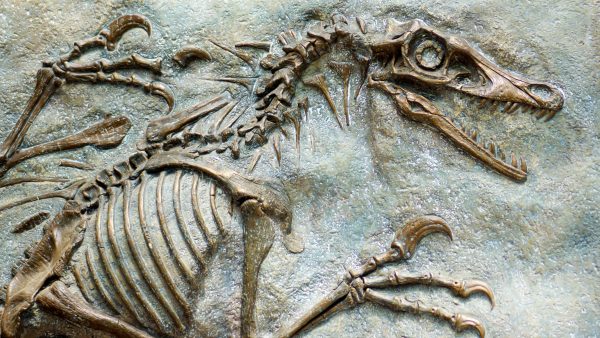Paleontologist Definition
A paleontologist is a scientist that studies the fossil record to better understand life on Earth. For example, they examine ancient plant remains to learn about past environments.
View Lesson on The Fossil Record
Become a member to get full access to our entire library of learning videos, reading material, quiz games, simple DIY activities & more.
Become a member to get full access to our entire library of learning videos, quiz games, & more.
Plans & Pricingto watch this full video.

Access All Videos
and Lessons, No Limits.
Access All Videos

No credit card required,
takes 7 sec to signup.
No card required

Ready-to-go lessons
that save you time.
Ready-to-go lessons
If you are on a school computer or network, ask your tech person to whitelist these URLs:
*.wistia.com, fast.wistia.com, fast.wistia.net, embedwistia-a.akamaihd.net
Sometimes a simple refresh solves this issue. If you need further help, contact us.
The Fossil Record
Fun Facts
- Paleontologists study fossils at the Western Science Center.
- Paleontologists found over 100,000 fossils near a Southern California lake.
- Paleontologists dig for fossils in sedimentary rock layers.
Why Do We Need To Know About Paleontologist
Paleontology helps us learn about Earth’s history by studying ancient life forms. Paleontologists are scientists who study fossils to see how life changed over millions of years. This helps us know more about biology and geology and shows us how the Earth has changed.
Paleontology is useful in many areas like environmental science, evolutionary biology, and museums. For example, finding fossils like the Tiktaalik helps us understand how animals moved from water to land. Paleontologists also help teach and do research by studying fossils like the Archaeopteryx and nothosaurus, which teaches us how diverse and complex life is.
Frequently Asked Questions
Check out the Full Lesson on The Fossil Record
In this lesson, we learn that:
- Fossils are evidence of past life, such as bones, teeth, and footprints.
- The collection of fossils in the Earth's crust and their placement in chronological order is called the fossil record.
- Scientists study the fossil record to understand how life on Earth has changed over time.
Related Topics
- Absorbency Definition
- Air Mass Definition
- Batteries Definition
- Biodiversity Definition
- Biomimicry Definition
- Biotechnology Definition
- Body Fossils Definition
- Camouflage Definition
- Carbon Dioxide Definition
- Cast Fossils Definition
- Chemistry Definition
- Chloroplasts Definition
- Classify Definition
- Collision Definition
- Conservation Definition
- Definition Of Nutrients
- Earth’s Axis Definition
- Earthquake Definition
- Engineer Definition
- Fossil Definition
- Fossil Record Definition
- Glacier Definition
- Inherited Traits Definition
- Invasive Species Definition
- Kuiper Belt Definition
- Life Cycle Definition
- Light Year Definition
- Limited Resource Definition
- Mold Fossils Definition
- Muscular System Definition
- Mutation Definition
- Natural Disaster Definition
- Natural Selection Definition
- Offspring Definition
- Paleontologist Definition
- Pollen Definition
- Potential Energy Definition
- Predator Definition
- River Definition
- Rock Definition
- Seismologist Definition
- Smelling Definition
- Soil Definition
- Solubility Definition
- Solution Definition
- Trace Fossil Definition
- Water Definition
- Weather Definition
Start a Free Trial Today. Get a $5 Amazon Gift Card!
Teachers! Start a free trial & we'll send your gift card within 1 day. Only cards left. Try it now.
Select Grade
Select Subject
This email is associated with a Science Kit subscription. Kit subscriptions are managed on this separate page: Manage Subscription

-
Download InvoiceScience & Math$/yr
-
Download InvoiceScience Only$/yr

access all lessons
• No credit card required •
"My students loved the videos. I started the video subscription in May and used them as a review before the state test, which I know contributed to 100% of my class passing the state test."
Rhonda Fox 4th Grade Teacher, Ocala, Florida
Use Generation Genius in Your School
Access all lessons free for 30 days.
"My students loved the videos. I started the video subscription in May and used them as a review before the state test, which I know contributed to 100% of my class passing the state test."
Rhonda Fox 4th Grade Teacher, Ocala, Florida
• No credit card required •
Already a member? Sign In
* no credit card required *

* no credit card required *
* no credit card required *


to Discover the Benefits of Generation Genius
Learn How to Save for Your School & District!

no credit card required
Skip, I will use a 3 day free trial
Enjoy your free 30 days trial
-
Unlimited access to our full library
of videos & lessons for grades K-5. -
You won’t be billed unless you keep your
account open past your 14-day free trial. -
You can cancel anytime in 1 click on the
manage account page or by emailing us.
-
Unlimited access to our full library of videos & lessons for grades K-5.
-
You won't be billed unless you keep your account open past 14 days.
-
You can cancel anytime in 1-click on the manage account page.
Cancel anytime in 1-click on the manage account page before the trial ends and you won't be charged.
Otherwise you will pay just $10 CAD/month for the service as long as your account is open.
Cancel anytime on the manage account page in 1-click and you won't be charged.
Otherwise you will pay $10 CAD/month for the service as long as your account is open.
We just sent you a confirmation email. Enjoy!
DoneWe use cookies to make your experience with this site better. By using this site you agree to our use of cookies. Click "Decline" to delete and block any non-essential cookies for this site on this specific property, device, and browser. Please read our privacy policy for more information on the cookies we use.Learn More
We use cookies to improve your experience. By using this site, you agree to our use of cookies. Click "Decline" to block non-essential cookies. See our privacy policy for details.Learn More




























































































































